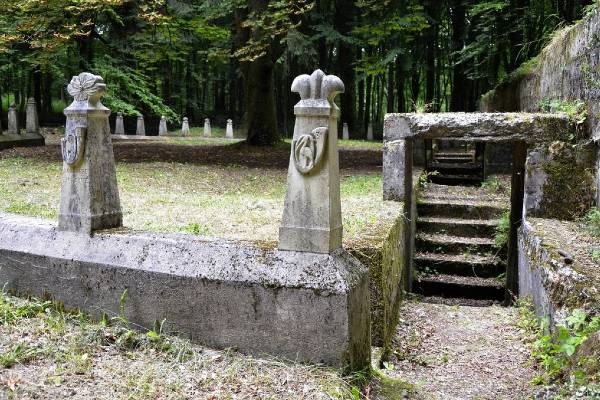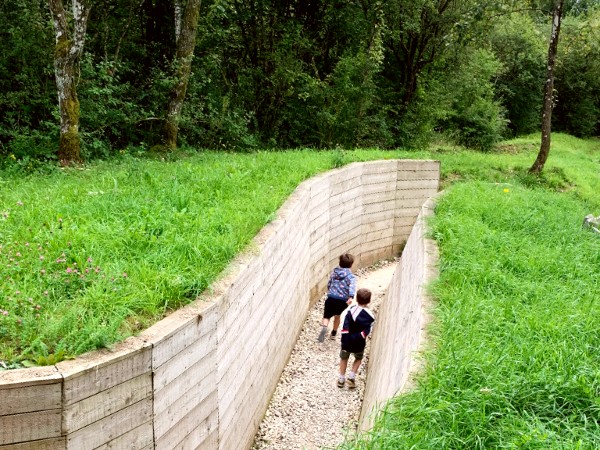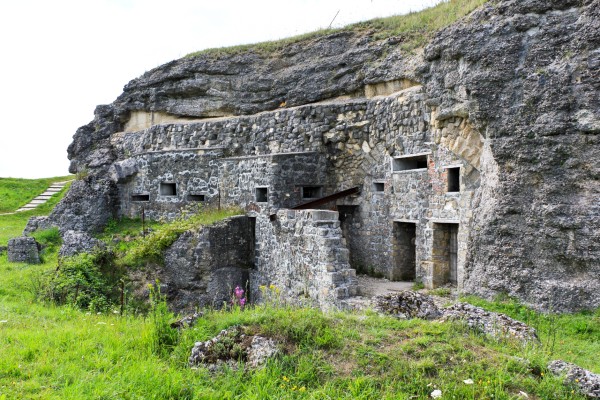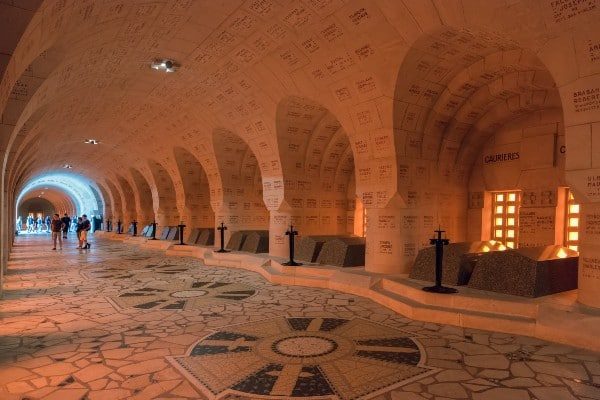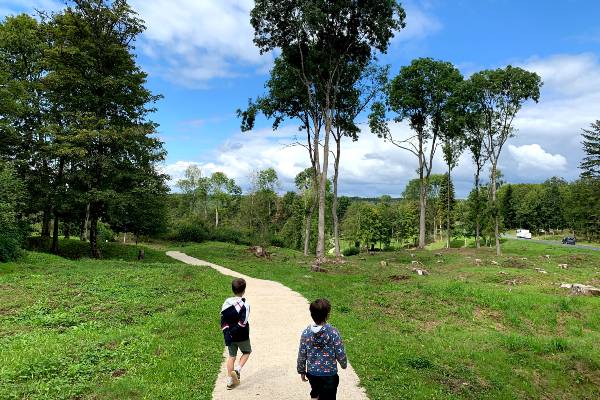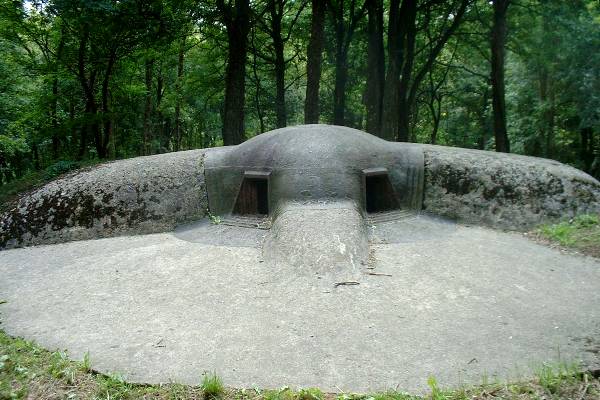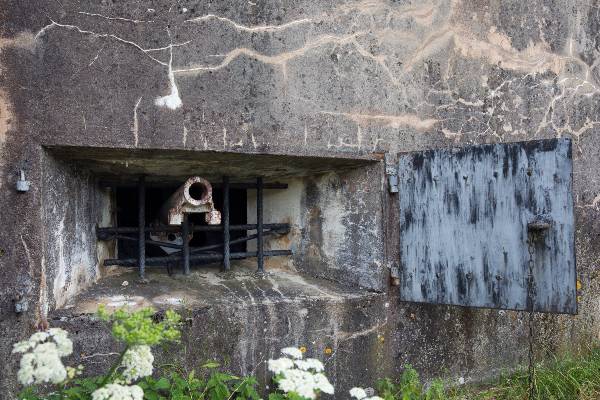Verdun is a place where the Great War is still very much present—both in what you can see and what you can feel. The Belgian and French Ardennes played a pivotal role in both world wars. In Part 1, we explored the historical background of the Battle of Verdun.
Today, we take you on a powerful day trip past some of the key battlefield sites that still bear witness to the horror and heroism of World War I. You can explore the region at your own pace with our free self-guided car tour, available on the IZI Travel app—perfect for curious travellers who like to take the road less rushed.
Your journey begins at the command Post of Colonel Driant – one of the first spots you’ll reach if you’re driving in from Lacuisine, and also one of the first hit during the battle. On this tiny plot of land, one square kilometre, 80,000 grenades (10,000 tons of explosives!) were launched in just one day. Driant’s small unit of chasseurs held off the Germans just long enough to give the French army time to prepare. Not far from here, a modest monument marks the spot. He had warned of the German attack. A haunting, lesser-known place worth stopping for—though signage is limited.
Fort Douaumont was the largest French fort in the area and played a central role in one of the most dramatic episodes of the battle. It became the logistical heart of the French defence effort—supporting the front lines with men, ammunition, and supplies. Today, the fort can be visited with an audio guide, which we highly recommend for truly absorbing the atmosphere of this imposing structure.
The role of the fortress during the war—and the story of its capture—is curious, to say the least.
At the start of World War I, German troops had decimated the Belgian forts of Namur, Liège, and Antwerp with their heavy mortars (the infamous Dicke Bertha). Convinced that static fortresses were obsolete, the French government had begun dismantling their own forts—during wartime. When the German attack came, Fort Douaumont was held by just 60 lightly armed, mostly older reservists whose main task was building maintenance.
The fort was captured almost without a fight. According to one of several accounts, Lieutenant Eugen Radtke and his men of the 6th Company, 24th Brandenburg Regiment, were the first to enter. Captain Haupt soon followed. They found the fort practically deserted and took control without resistance. The message they sent was brief and chilling: “Douaumont ist gefallen.”
The news shocked both nations. In Germany, church bells rang and children were given a day off school. In France, the loss was met with grief and disbelief. Not a single shot had been fired in the conquest, yet the fall of Douaumont would ultimately claim the lives of thousands of French soldiers in the months to come.
The story came full circle in October 1916. On the morning of the 24th, around 11:30, the French launched a bold assault on the fort. Troops advanced, climbed onto the superstructure, and broke in. But once again, the fort was nearly empty. A fire had broken out the day before, and the Germans, fearing an explosion in the ammunition stores, had quietly evacuated. Fort Douaumont changed hands for the second time—again, with barely a shot fired.
The Ossuary of Douaumont is perhaps the most emotional stop. Beneath this solemn monument rest the remains of 130,000 unidentified soldiers. The ossuary dates back to 1919 and was later transformed into the powerful symbol it is today, complete with tower, chapel, and cemetery. The scale of the sacrifice becomes painfully clear here.


